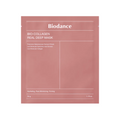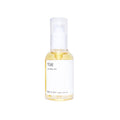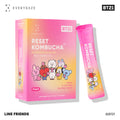Leaders Insolution Moisturizing Recovery Mask-Review M 2
Hello, Review M friends.↖(^▽^)↗
Intro
As far as I remember (I guess it was around 8~9 years ago,) the company called Genic introduced the first hydrogel mask to the Korean market. It was a splendid debut – they still hold the record for “the most selling single item in all home shopping channel.” But other cosmetic companies began to introduce the same type of hydrogel masks, and the hydrogel is not a new type of mask sheet material anymore. But the ongoing journey of finding a new material of Korean companies brought us a new generation hydrogel again – fermented coconut gel.

First Impression
Just like the other gel-type masks, Leaders Insolution Moisturizing Recovery Mask is contained in an individual package. Two protection sheets are attached to the coconut jelly to prevent coagulation of this sophisticated sheet. (Seriously, remember this. I heard many people use this mask as the protection sheet is still attached one side.)

Application
Definitely, IT IS DIFFERENT from regular hydrogel mask. It almost feels like putting fascia on your skin (Do you know the thin and half transparent, membrane-like thing when you prepare chicken? That’s fascia, •﹏•. The texture is much smoother and recognizably lighter than the other gel-type masks. So it has a much better affinity to skin, and you can freely move while doing this sheet mask session. It also contains a generous amount of serum and interestingly, you can pour this serum on the top of the gel because the coconut jelly easily sucks up the serum and efficiently delivers it to your skin. The serum is neither sticky nor water-like. You can check out the video for this.
Ingredient Check
I could not see especially detrimental ingredients in this mask. Methylpropanediol and butylene glycol are relatively safe penetration enhancers and emollients. They used glycerin as a main moisturizing agent and added betaine as a subordinate agent. (Betaine is a commonly used moisturizing agent in organic/natural cosmetics, generally extracted from sugar cane.) Witch Hazel water is used as an astringent. Chamomilla Recutita Flower Extract (Chamomile Extract) – a known anti-inflammatory/antioxidant – was added as the 5th ingredient. I won’t mention about additional plant extracts since they are only contained traceable amount and the pharmacological mechanism is unclear. I could see many single amino acids on the inactive ingredient list, and I don’t know why. (Probably they thought amino acids can be used to restore the skin layer but I do not agree with them.)

Afterthought
I think coconut jelly is an extraordinary material to make a gel-type mask. It adheres much better than other gel masks, and it delivers serum to your skin very efficiently (you can even add more serum on the top of this masks). Because of the active ingredient Witch Hazel, it definitely feels less sticky on skin without using alcohol family in the principal components. (Remember this, alcohol is a funny guy.╮(╯3╰)╭ It makes your skin really feel fresh, but it can be an irritant for some people.) It made my skin refreshed and moisturized without making the skin overly sticky. (The anti-wrinkle mask from same product line is a bit too sticky to go to sleep or right away or to put the make-up on right away.) It is a premium mask for sure and worth to try. But at the same time, I am not sure I will use this mask routinely because of its relatively high price. ($6)

1 line Review
★★★★☆
Pros: It adheres like glue on your skin. You can keep adding serum on the top of the gel. (Definitely plus)
Cons: A little too expensive, and complicated ingredient list
Idea: A premium coconut jelly mask for the people with hyperactivity when they wear a gel mask.
Reference
Mckay, Diane L.; Blumberg, JB (July 2006). "A review of the bioactivity and potential health benefits of chamomile tea (Matricaria recutita L.)". Phytother Res. 20(7): 519–30. doi:10.1002/ptr.1900. PMID 16628544.
Charousaei F, Dabirian A, Mojab F. (2011). "Using chamomile solution or a 1% topical hydrocortisone ointment in the management of peristomal skin lesions in colostomy patients: results of a controlled clinical study." Ostomy Wound Manage 57 (5): 28–36.











